On the final approach into Palma de Mallorca airport as you survey the landscape, you will inevitably spot not just one, two or three windmills but scores of them !
Iconic features of the landscape of the the island dating largely from the 16th to the 19th centuries, these water and flour mills are symbols of the engineering acumen of Mallorcan farmers, harnessing the wind to grind grain and pump water.
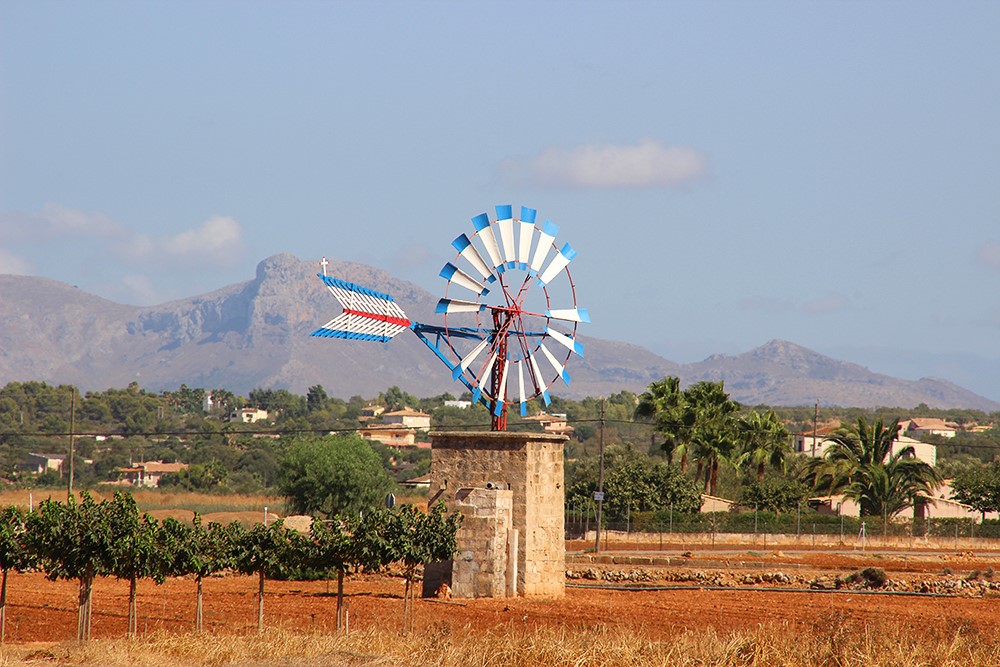
There is even an association, ‘Friends of the Majorcan Windmills’ who are passionate about restoring and maintaining these cultural and heritage structures.
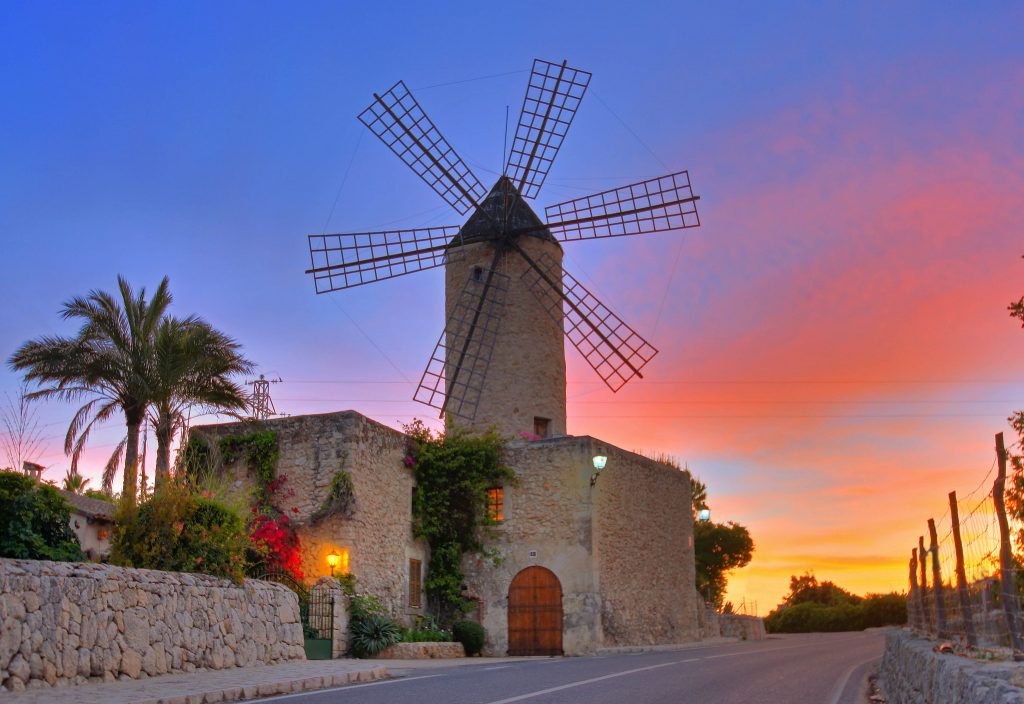
Of the 3000 or so windmills on the island, about 2,500 are water-extraction mills mainly seen in the areas of Campos, Ses Salines and in the middle of the island near Sa Pobla and Muro and 600 “classic” windmills recognised by their wooden vanes and conical “cap”, used for grinding grain.
The oldest and most common type of water-extraction windmill is the “Ramell”, meaning ‘flower’ which have wooden vanes opened manually, hence the need for a flat topped tower. These sadly are often in a poor state of repair, with maybe just the tower remaining. Later models had metal vanes, some with ‘tails’ or ‘arrows’ used to pump water into a “safareig” or water reservoir and these have fared better.
The Mallorcan government has developed a project dedicated to collating an inventory of all the windmills on the island with the help of the Association and plan for their restoration.
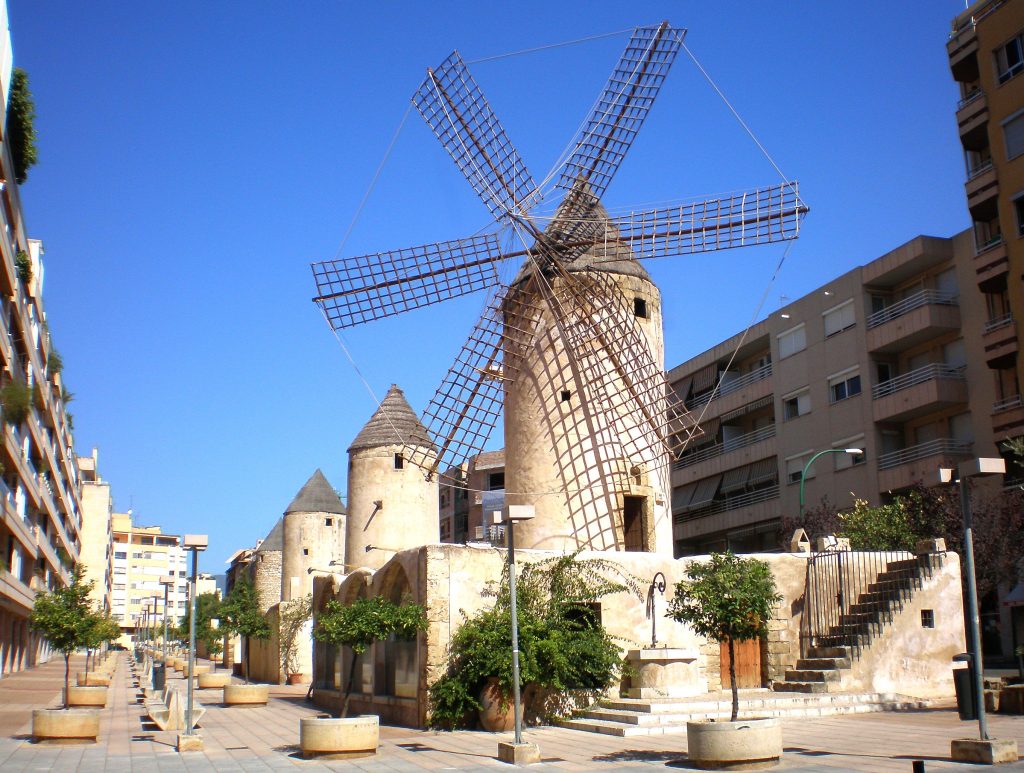
The first to be restored were the three windmills of Es Jonquet, the sleepy Palma barrio which holds its old-world charm of a former fishing village. Small alleyways, lined with simple, whitewashed cottages, wend up past the old mills, set on a slope with panoramic views over the Bay of Palma.
Originally there were seven flour mills, now just five. One of the three restored mills , Molí d’en Garletam, is now a museum dedicated to a greater appreciation of the windmills as a special feature of the cultural landscape.
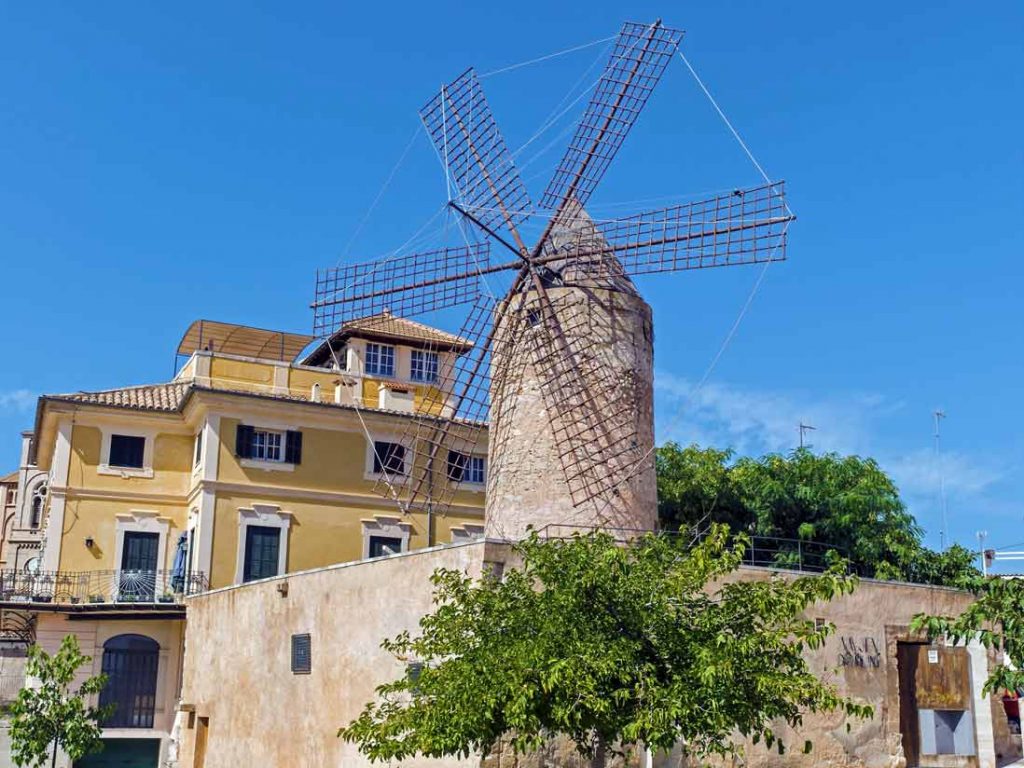
The interpretation centre traces the history and typology of the windmills across the Balearics.
Some 30 windmills across the island have been restored including the “Sa Planeta” windmill ( seen below ) in Andratx.
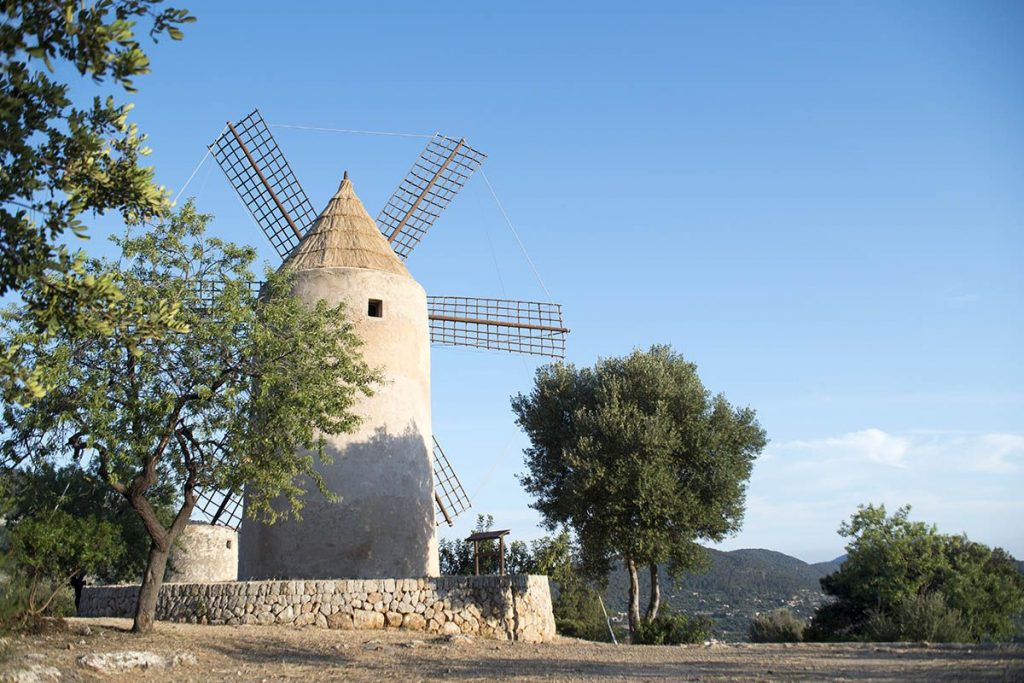
You should now be an expert on windmills and will be able to tell the difference between flat and conical, wooden or metal, with and without arrows so that next time you visit Mallorca, be sure to look!
